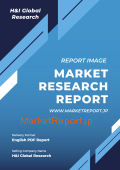1 報告の範囲
1.1 市場概要
1.2 対象期間
1.3 研究目的
1.4 市場調査手法
1.5 研究プロセスとデータソース
1.6 経済指標
1.7 対象通貨
1.8 市場推計の留意点
2 執行要約
2.1 世界市場の概要
2.1.1 グローバル・フォルマスルフォン年間販売量(2020年~2031年)
2.1.2 地域別フォラムスルフォロン市場(2020年、2024年、2031年)の現状と将来分析
2.1.3 フォラムスルフォロン市場の国・地域別現在の動向と将来予測(2020年、2024年、2031年)
2.2 フォラムスルフォロンセグメント(タイプ別)
2.2.1 純度98%以上
2.2.1 純度98%以上
1 Scope of the Report
1.1 Market Introduction
1.2 Years Considered
1.3 Research Objectives
1.4 Market Research Methodology
1.5 Research Process and Data Source
1.6 Economic Indicators
1.7 Currency Considered
1.8 Market Estimation Caveats
2 Executive Summary
2.1 World Market Overview
2.1.1 Global Foramsulfuron Annual Sales 2020-2031
2.1.2 World Current & Future Analysis for Foramsulfuron by Geographic Region, 2020, 2024 & 2031
2.1.3 World Current & Future Analysis for Foramsulfuron by Country/Region, 2020, 2024 & 2031
2.2 Foramsulfuron Segment by Type
2.2.1 Purity>98%
| ※参考情報 フォラムスルフロン(Foramsulfuron)は、農業において広く使用される選択的除草剤の一種です。主に穀物作物に対して効果を発揮することが特徴で、特にトウモロコシや小麦などの栽培において重要な役割を果たしています。その化学構造は、スルホニルウレア系除草剤に分類されるものであり、特に除草効果が高いことから、多くの農業システムで活用されています。 フォラムスルフロンの定義としては、植物に特有のアミノ酸合成経路を阻害することによって、雑草を効果的に抑制する化合物であると言えます。具体的には、葉緑体内のアミノ酸の合成を阻害し、植物の成長を妨げることで雑草を枯らします。この特性により、フォラムスルフロンは選択的に作物を守りながら、雑草を排除することが可能です。 フォラムスルフロンの特徴としては、まずその選択性の高さが挙げられます。これは、作物に対してはほとんど悪影響を及ぼさず、一方で多くの種の雑草に対しては強力な効果を持つため、農業現場での使用が促進されています。また、フォラムスルフロンは水溶性が高く、土壌中での移動も比較的早いため、リーズナブルな使用量で効果を発揮します。 さらに、フォラムスルフロンは長時間にわたって効果が持続することが特徴的です。このため、単回の散布で効果を持続させることができ、農作業の効率化に寄与しています。また、環境への影響が比較的少なく、持続可能な農業を実践するうえでの重要な選択肢となることが期待されています。 フォラムスルフロンの種類としては、製品形態や用途に応じたさまざまな製品があります。通常は、液体や顆粒の形態で市販されており、用途や使用条件に応じた選択が重要です。それぞれの製品には、適用作物や使用時期が明確に示されており、これに従って適切に使用することが求められます。 具体的な用途としては、フォラムスルフロンは主に穀物作物の生育期間中に使用され、雑草の発生を防ぐために散布されます。例えば、トウモロコシや小麦の栽培時に、雑草が成長してしまう前に適切なタイミングで散布することが重要です。また、一部の果樹や野菜の栽培においてもその効果を期待することができ、より広範な利用が認められています。 フォラムスルフロンの使用において注意すべき点の一つは、対象とする雑草の耐性の問題です。特定の雑草がフォラムスルフロンに対して抵抗性を持つ場合、効果が薄れる可能性があります。そのため、農業従事者は定期的に雑草の種類を観察し、必要に応じて他の除草剤と組み合わせて使用することが推奨されています。 また、関連技術としては、除草剤の効果を最大化するための技術も存在します。これには、散布技術やタイミングの最適化、さらには作物の選定などが含まれます。最近では、デジタル農業技術の進展により、精密農業が普及し、土壌の状態や作物の生長をモニターしながら、最適な散布方法を模索することが可能になってきています。 さらなる研究開発も進んでおり、フォラムスルフロンに関する新たな知見や利用法が発表されています。これにより、より効果的な除草が可能になるだけでなく、環境への配慮も考慮した持続可能な農業の実現が期待されています。農業においては、こうした除草剤の適切な使用が生産性の向上に寄与し、結果として国の食料安全保障を支える重要な要素となるのです。 最後に、フォラムスルフロンはその効能や選択性により広く利用されている除草剤であるものの、その使用に際しては周囲の環境や作物への影響を考慮しつつ、適切な技術と方法で運用されるべきです。農業の効率化や持続可能性を見据え、今後もその利用が進むと考えられます。 |











